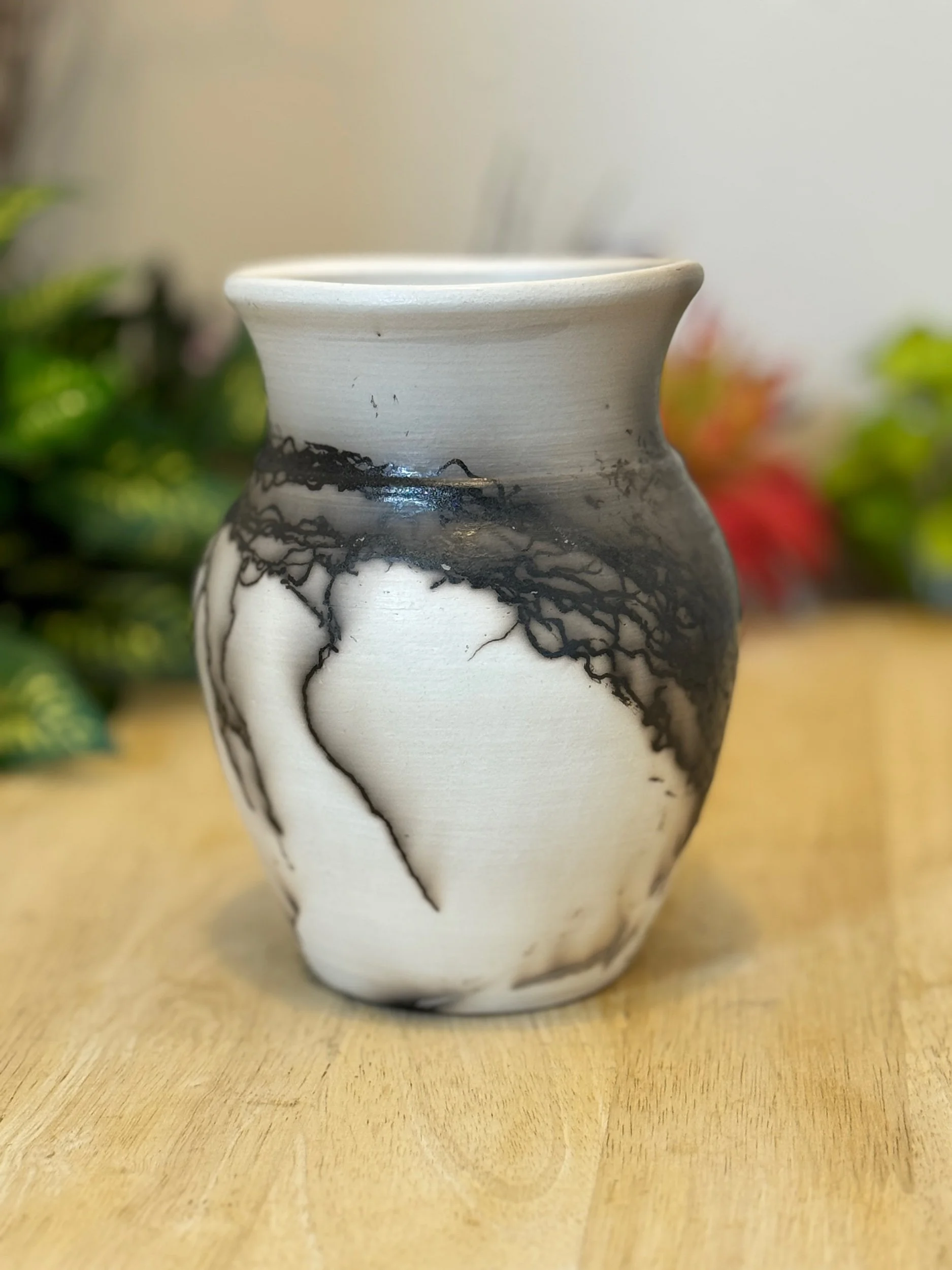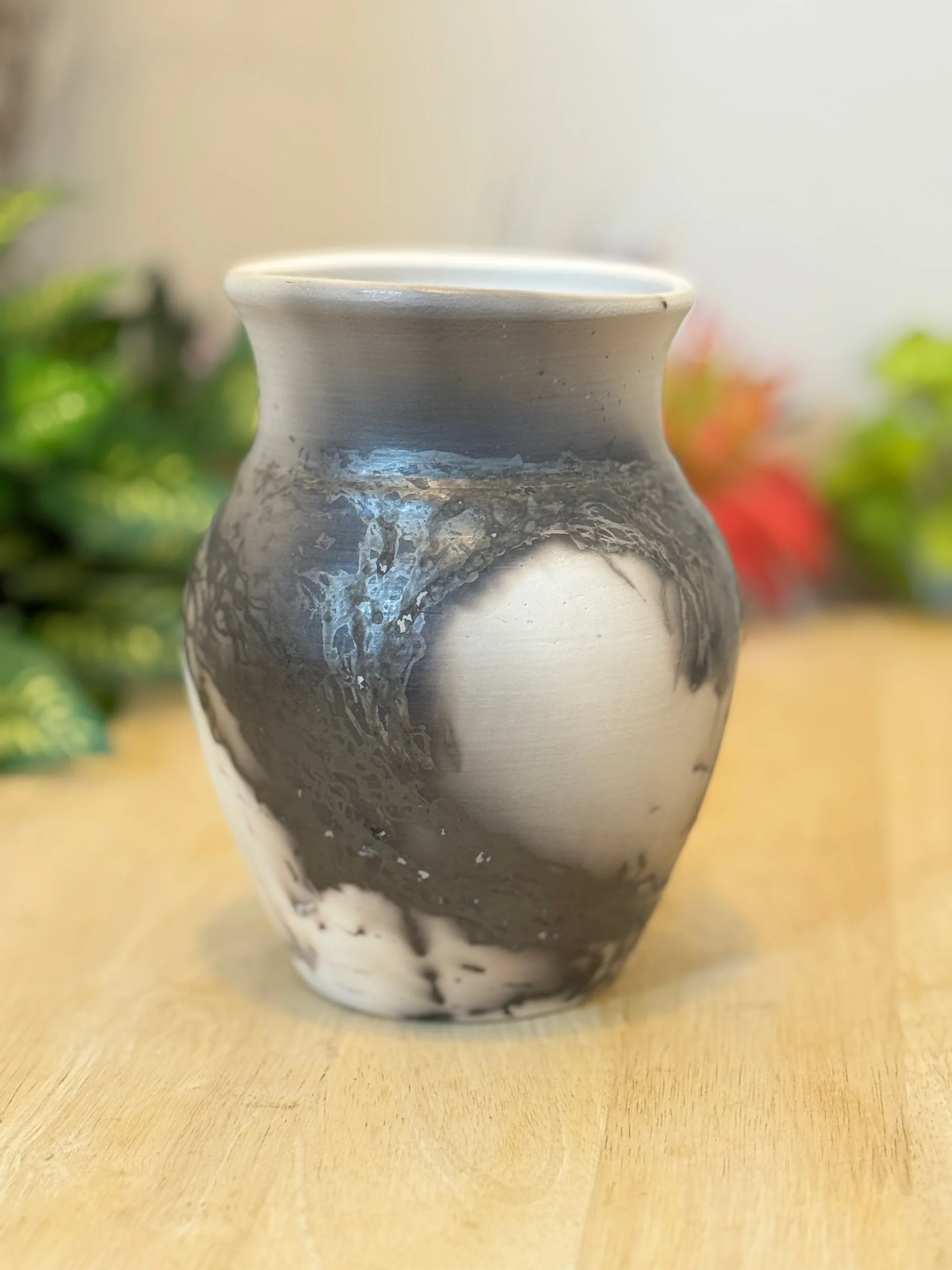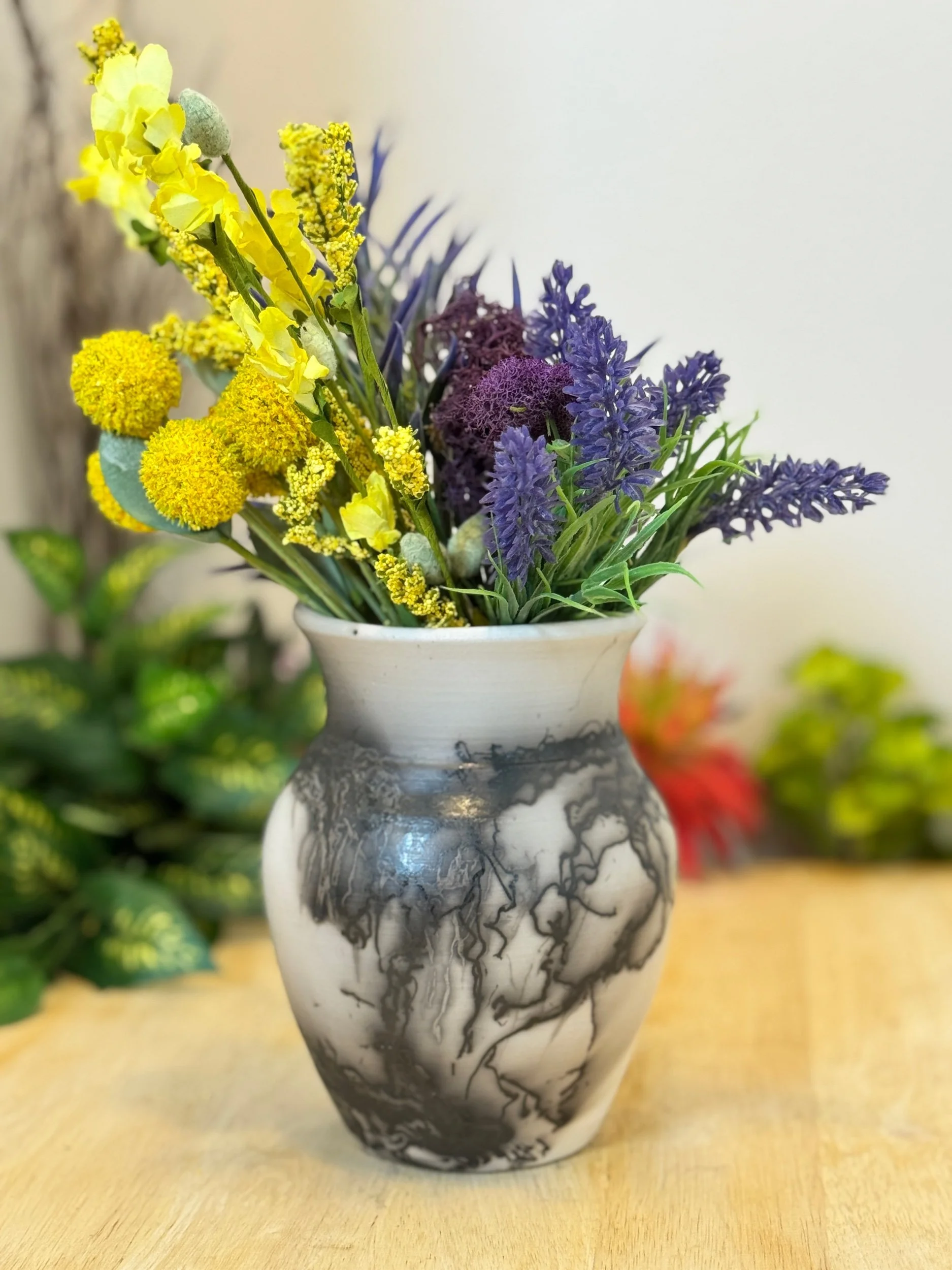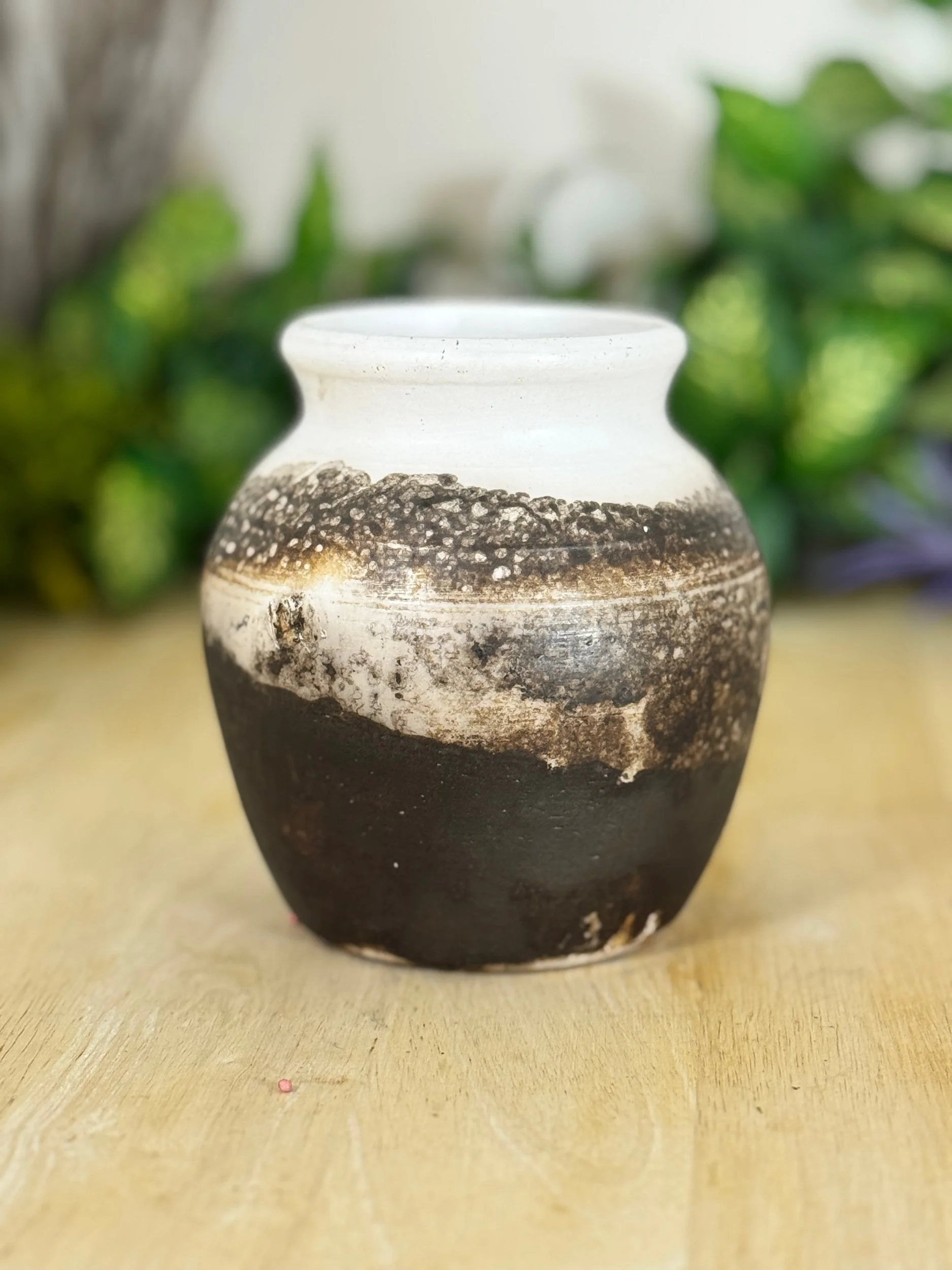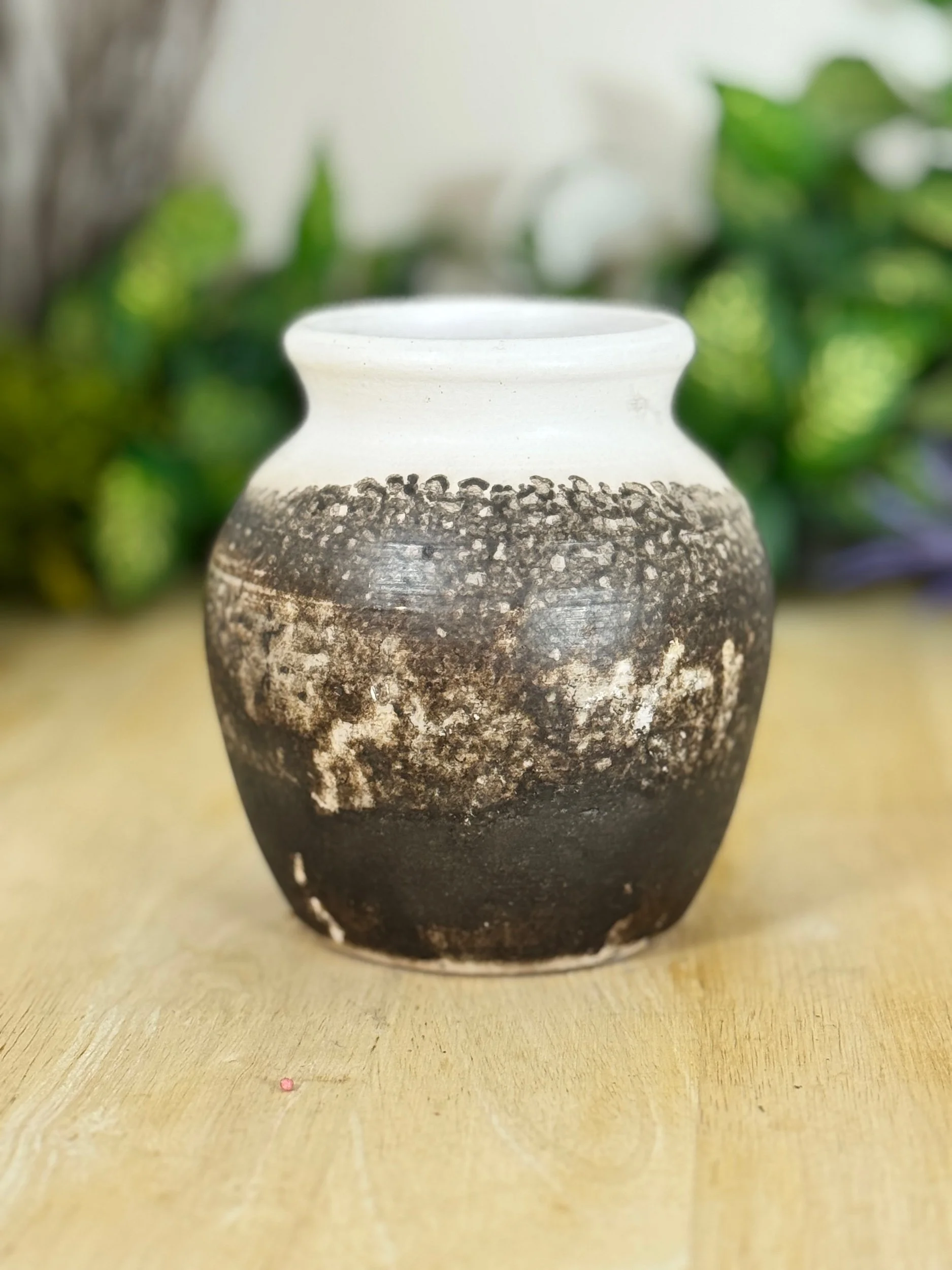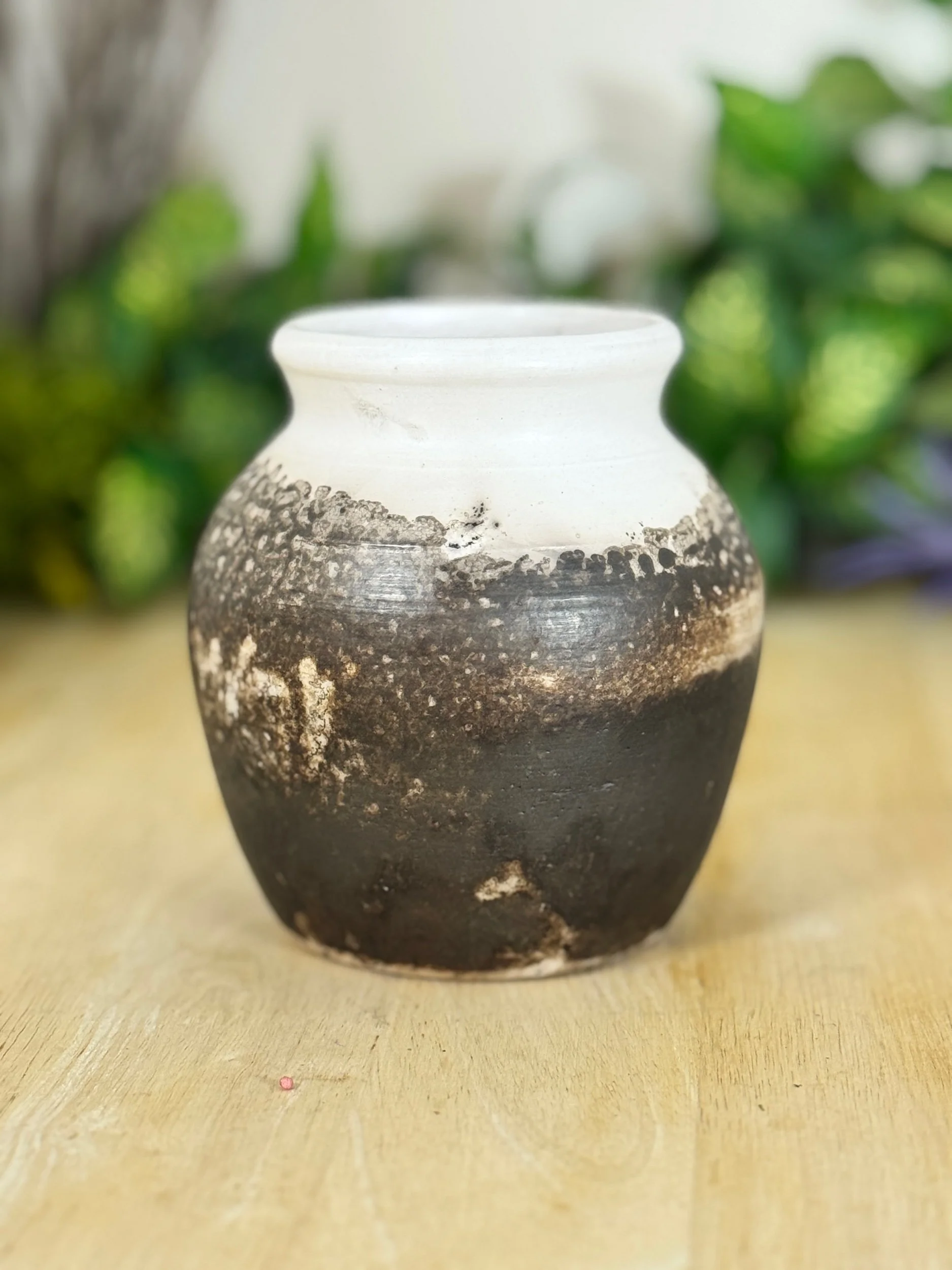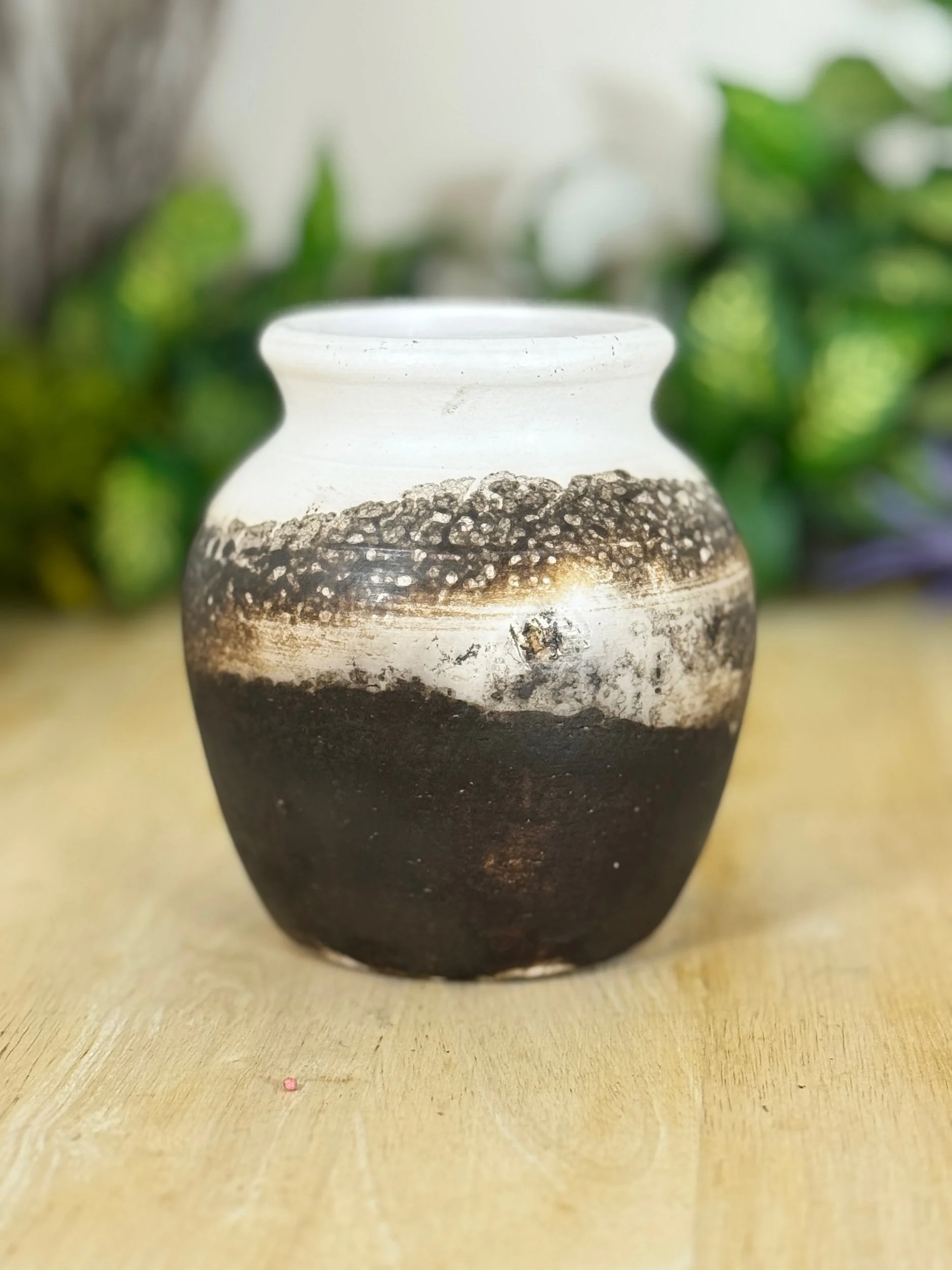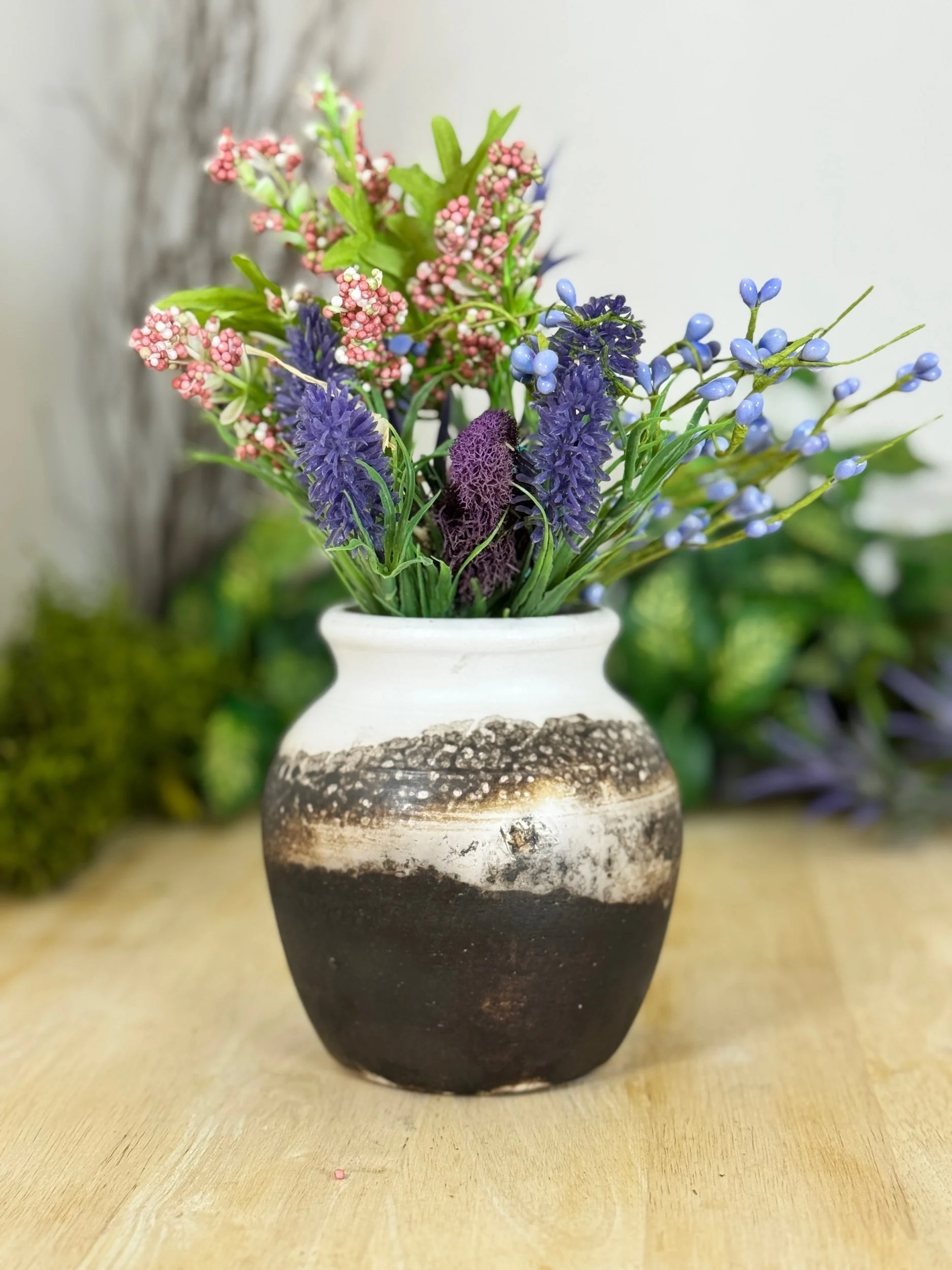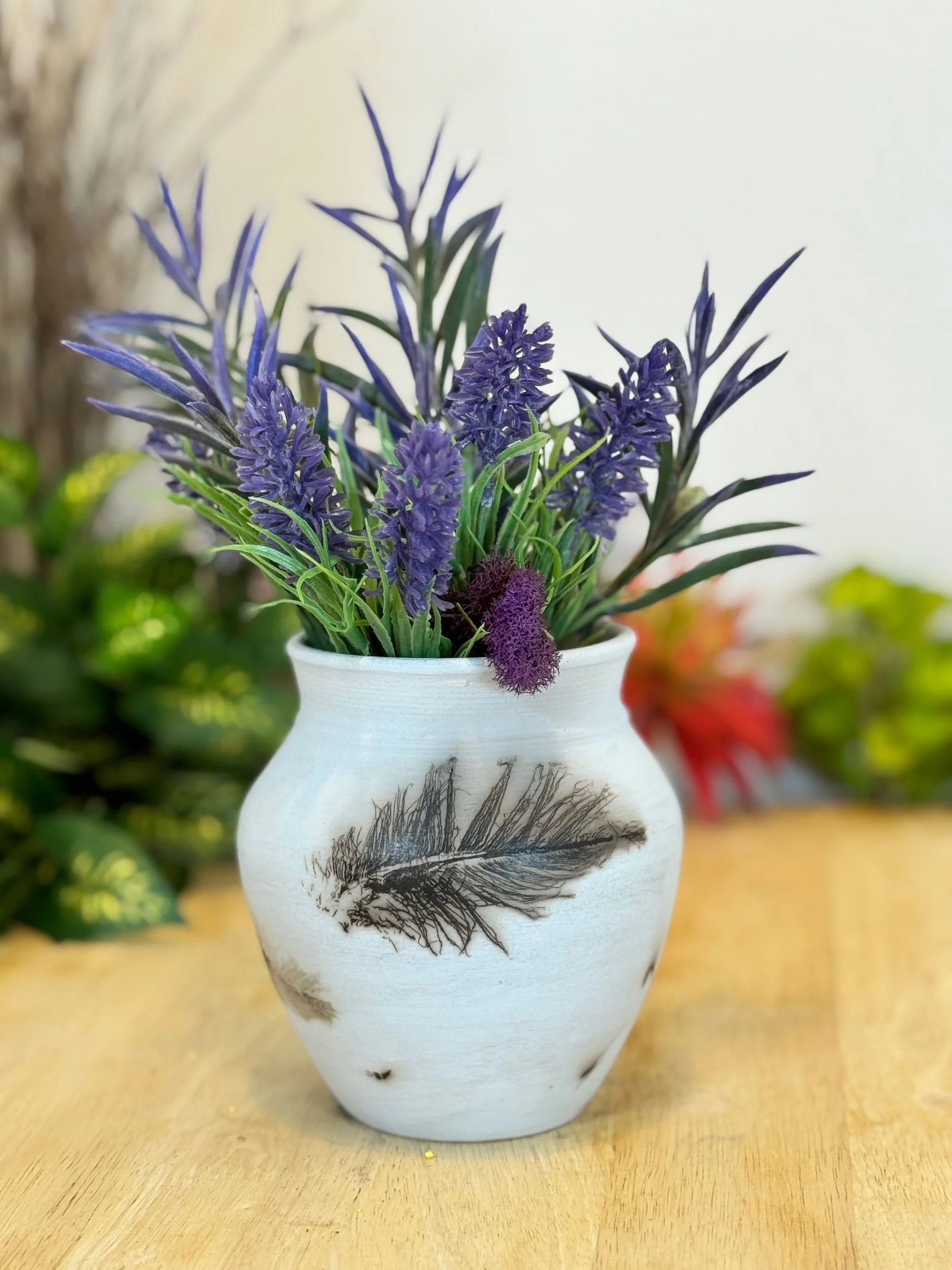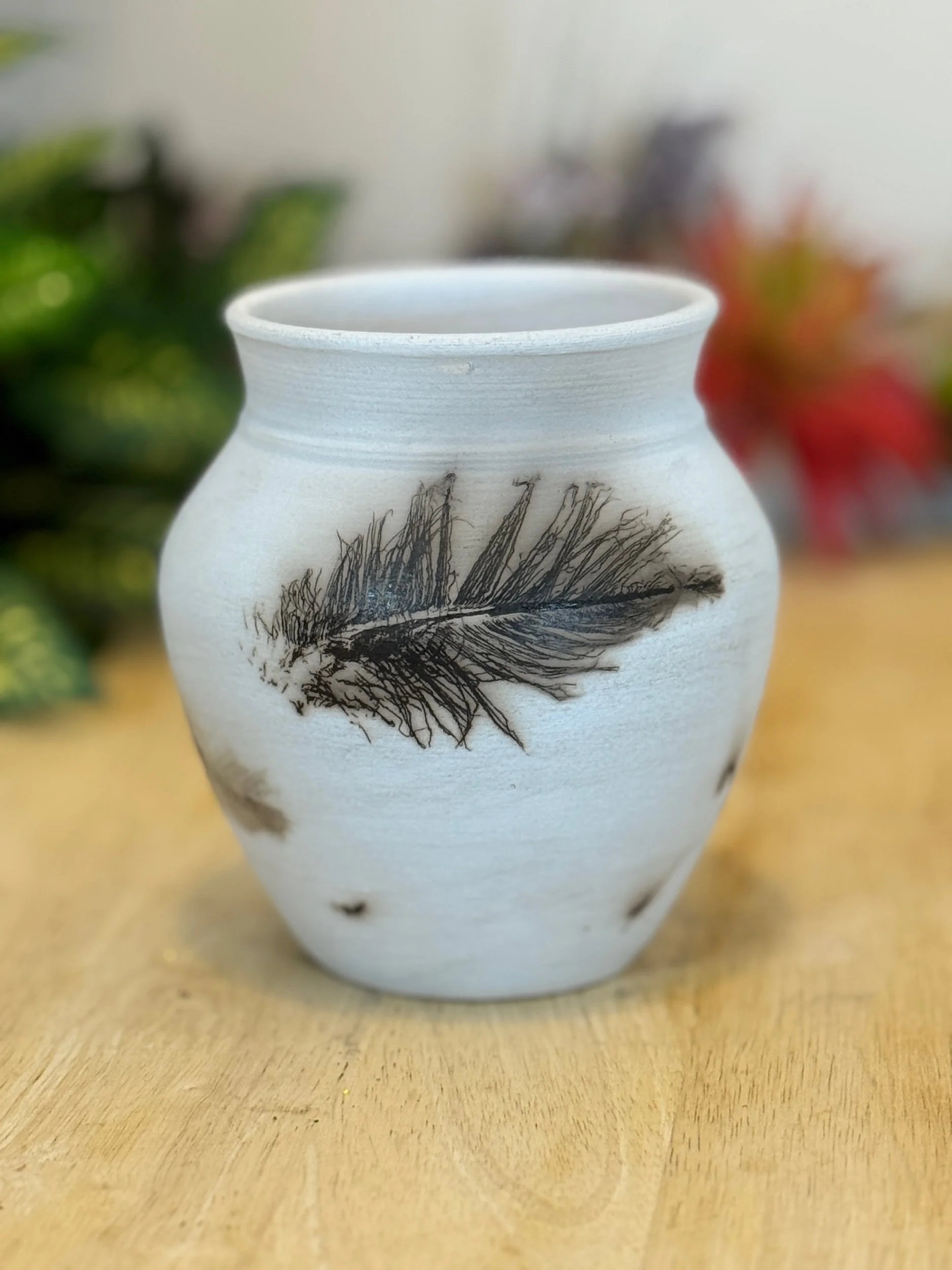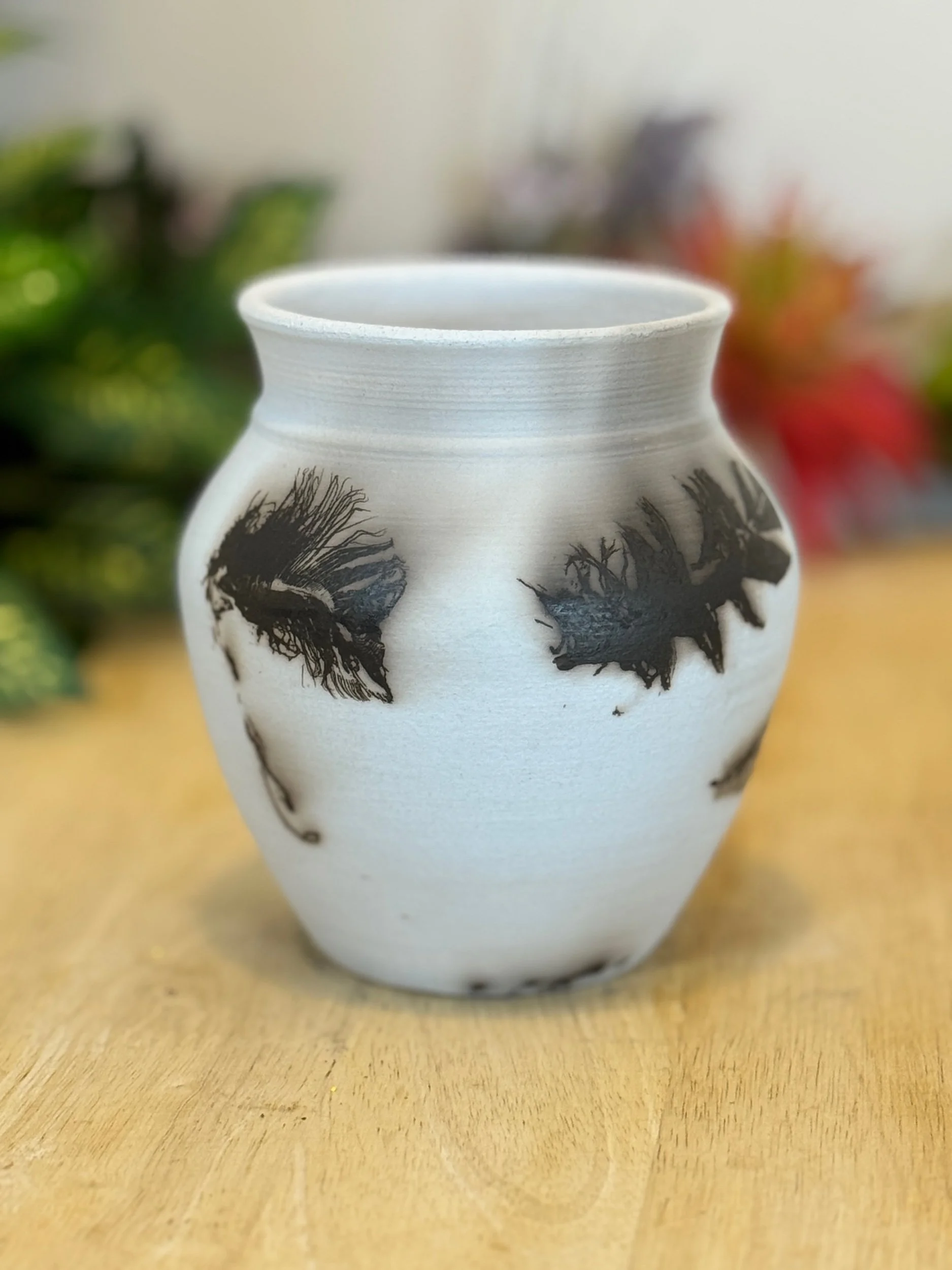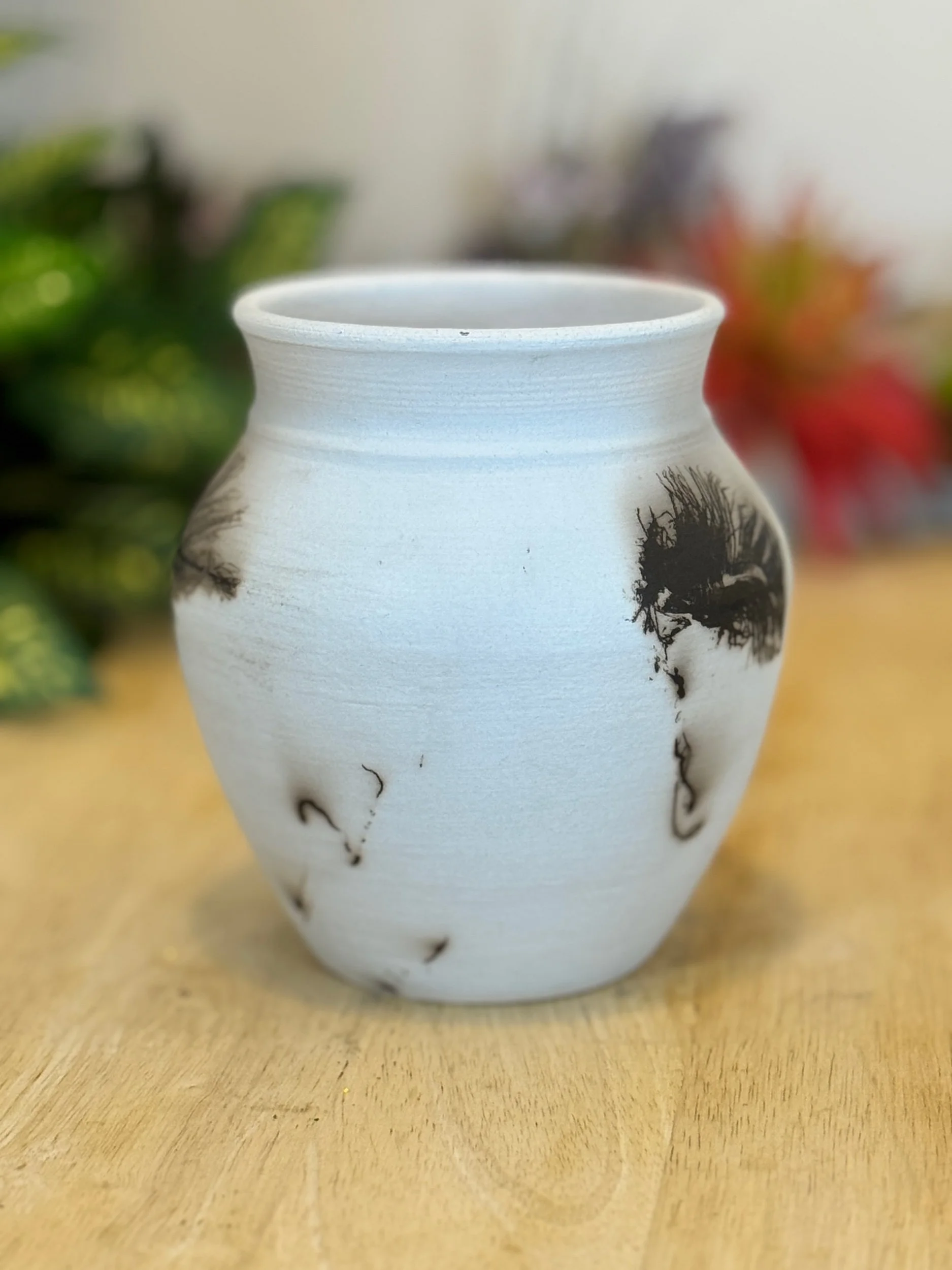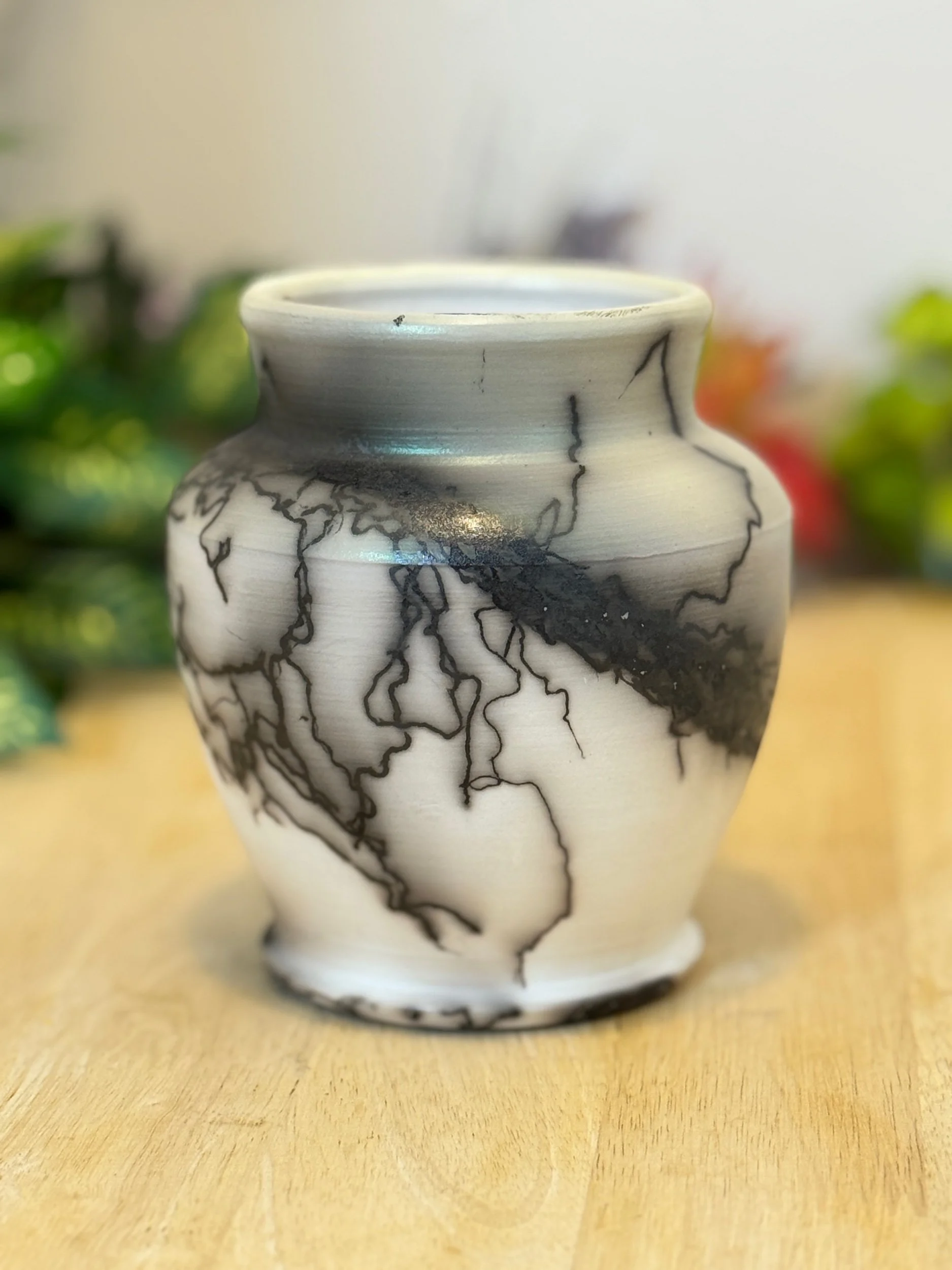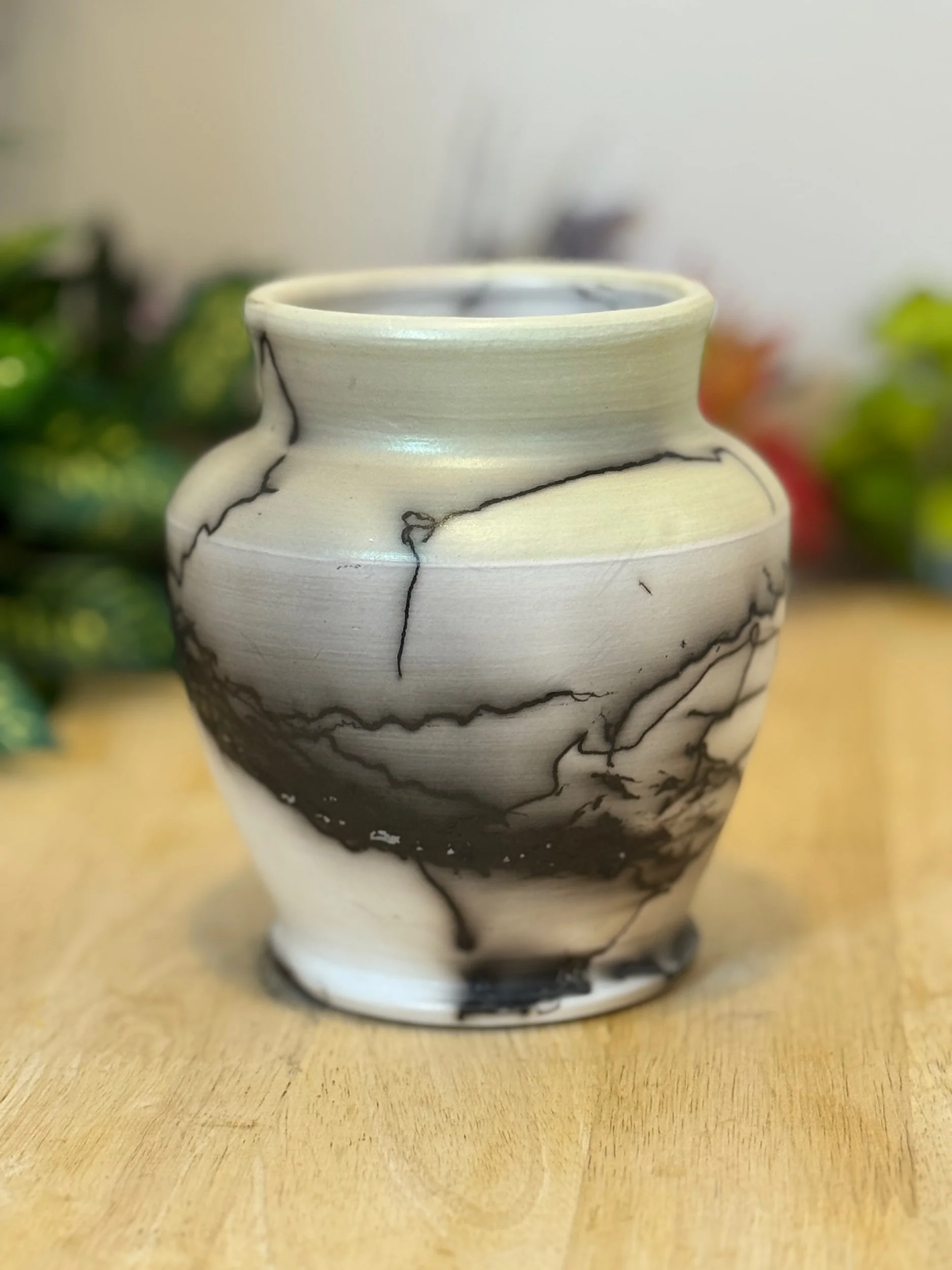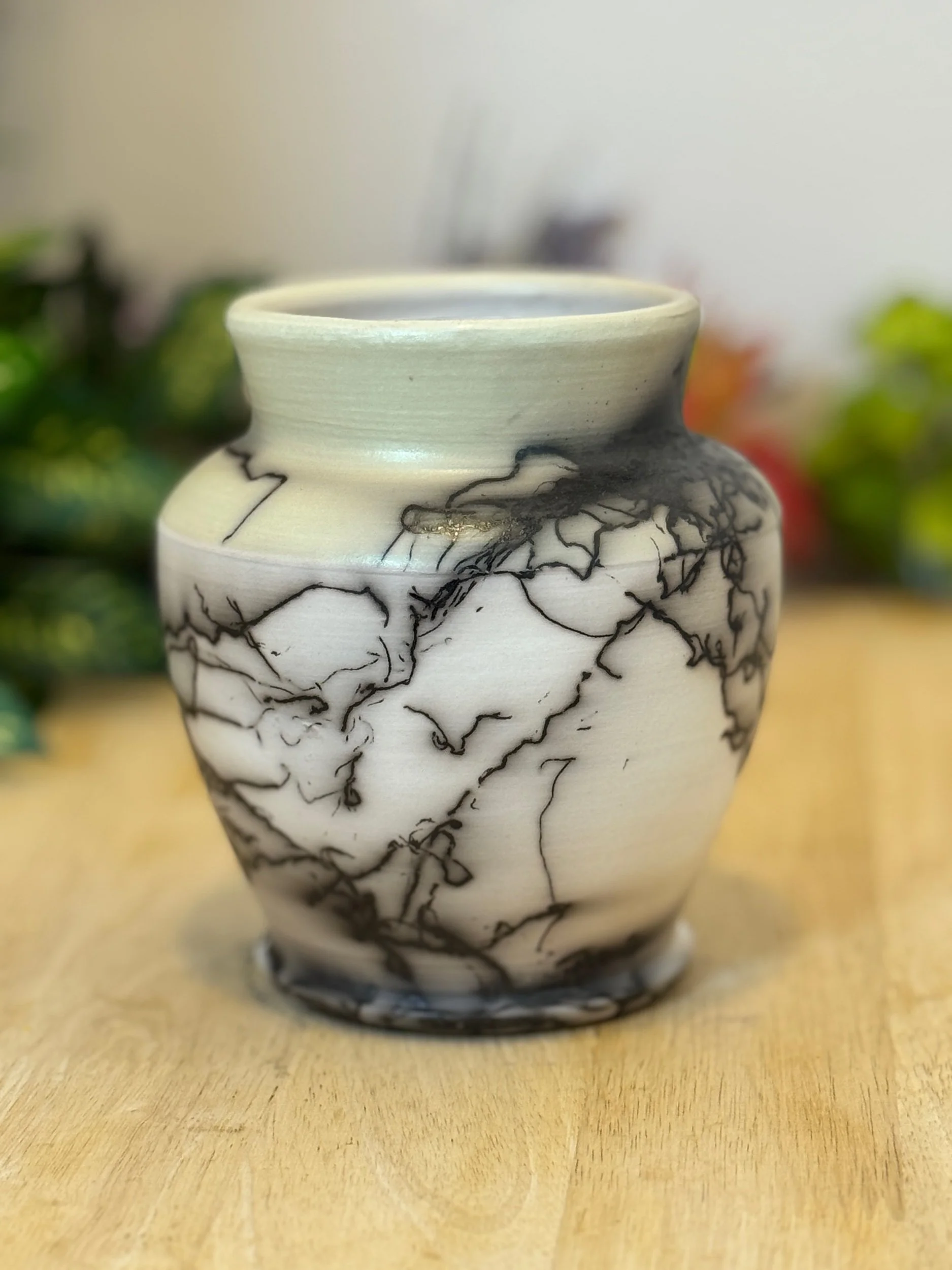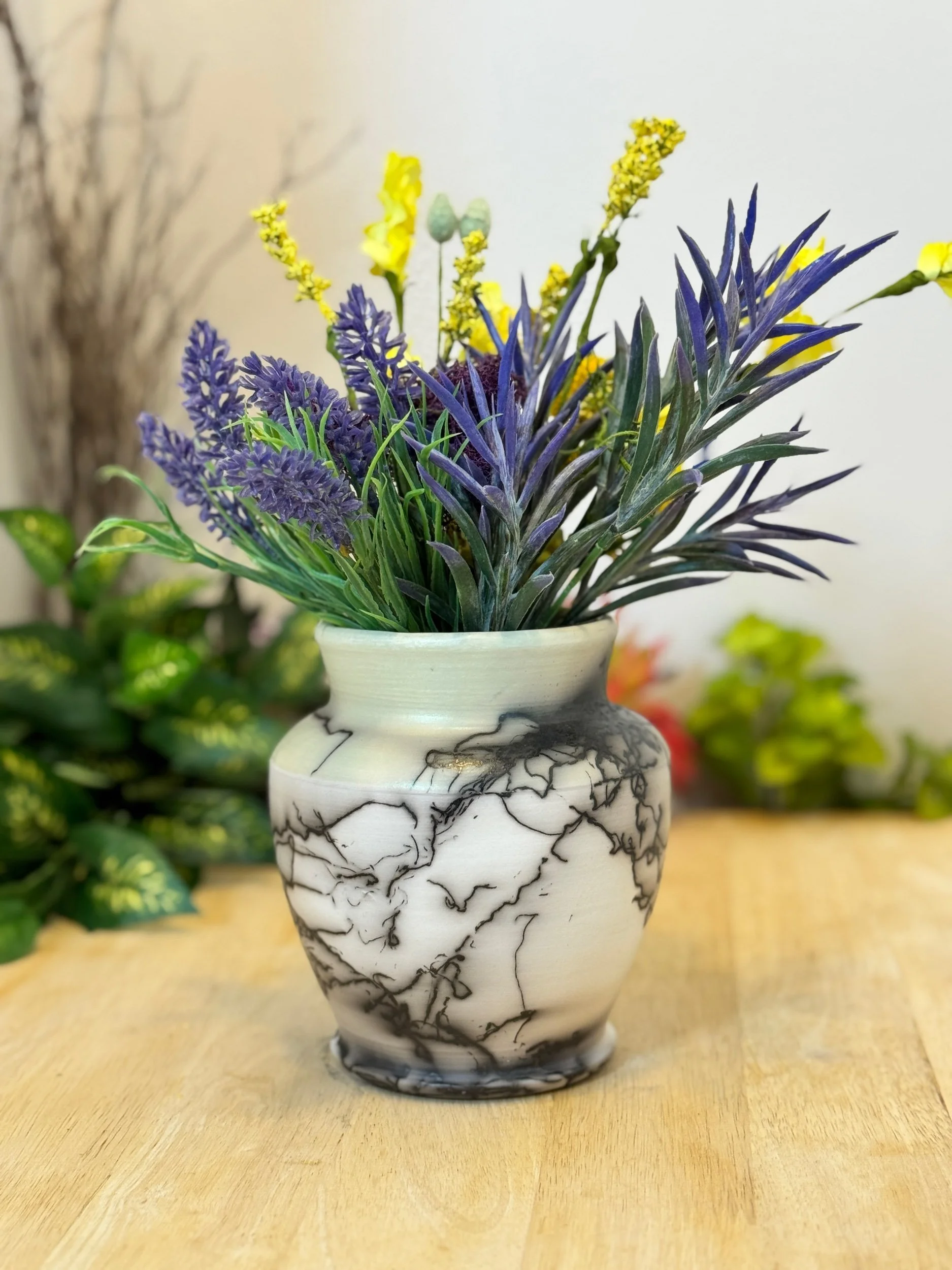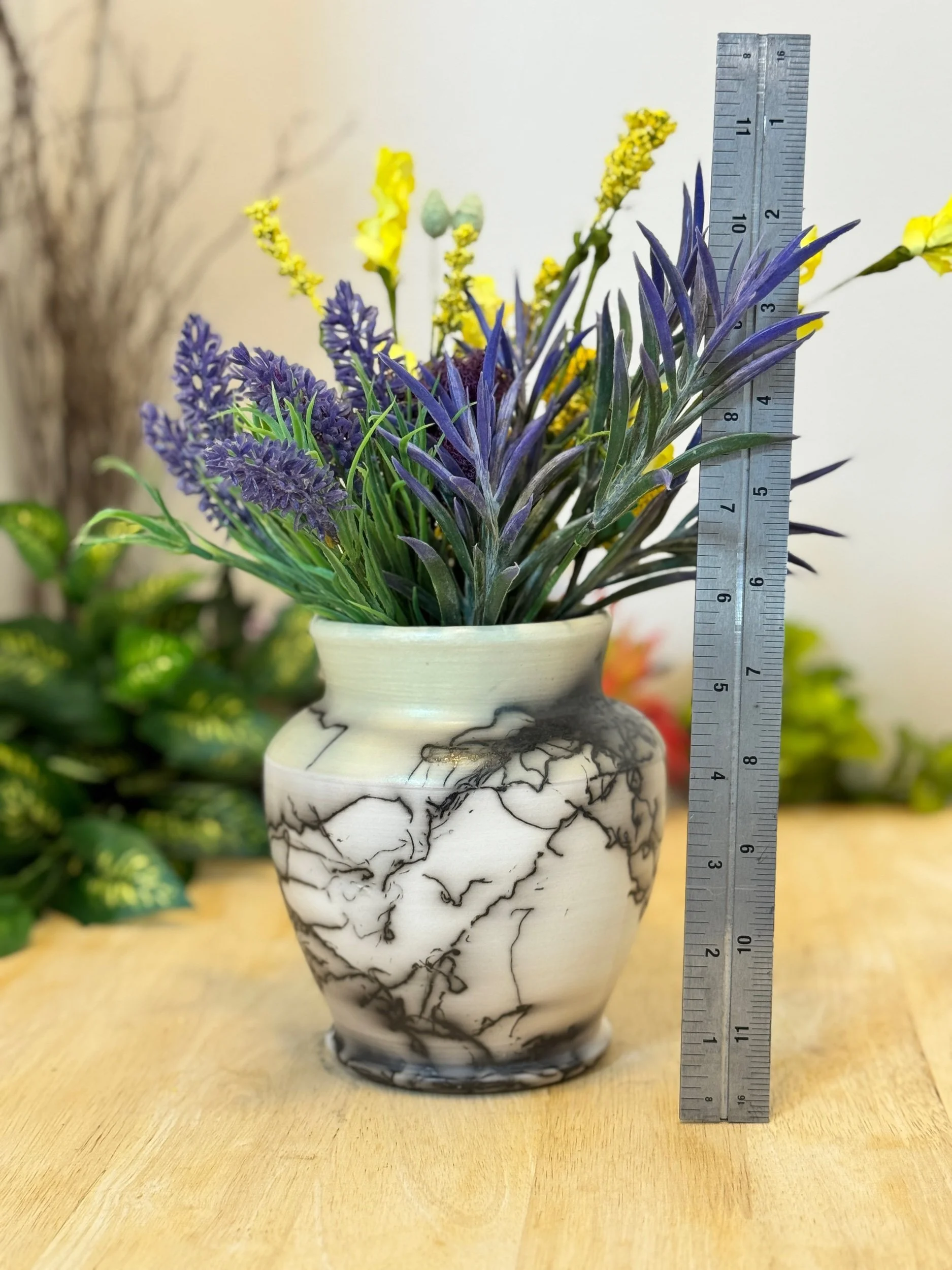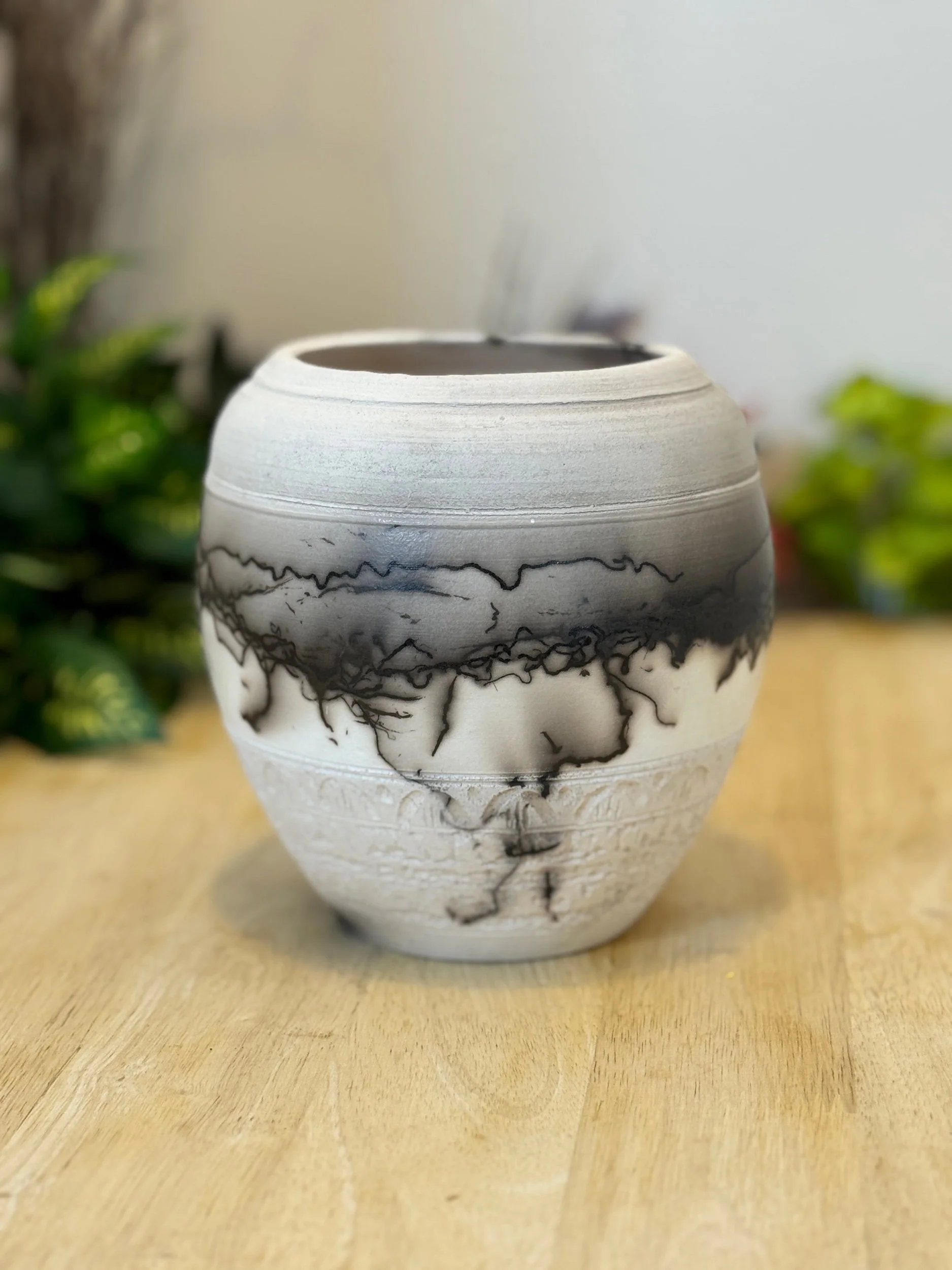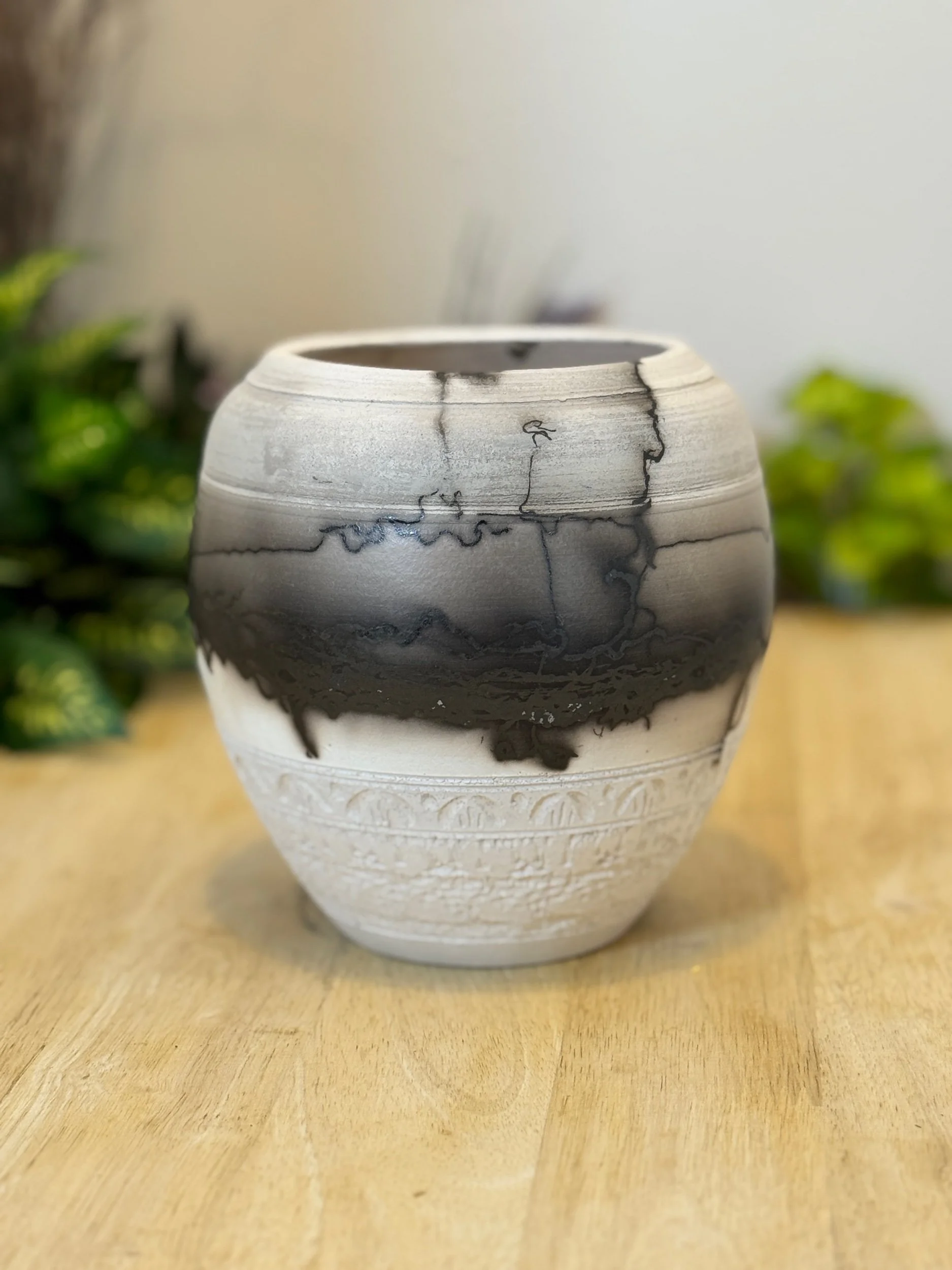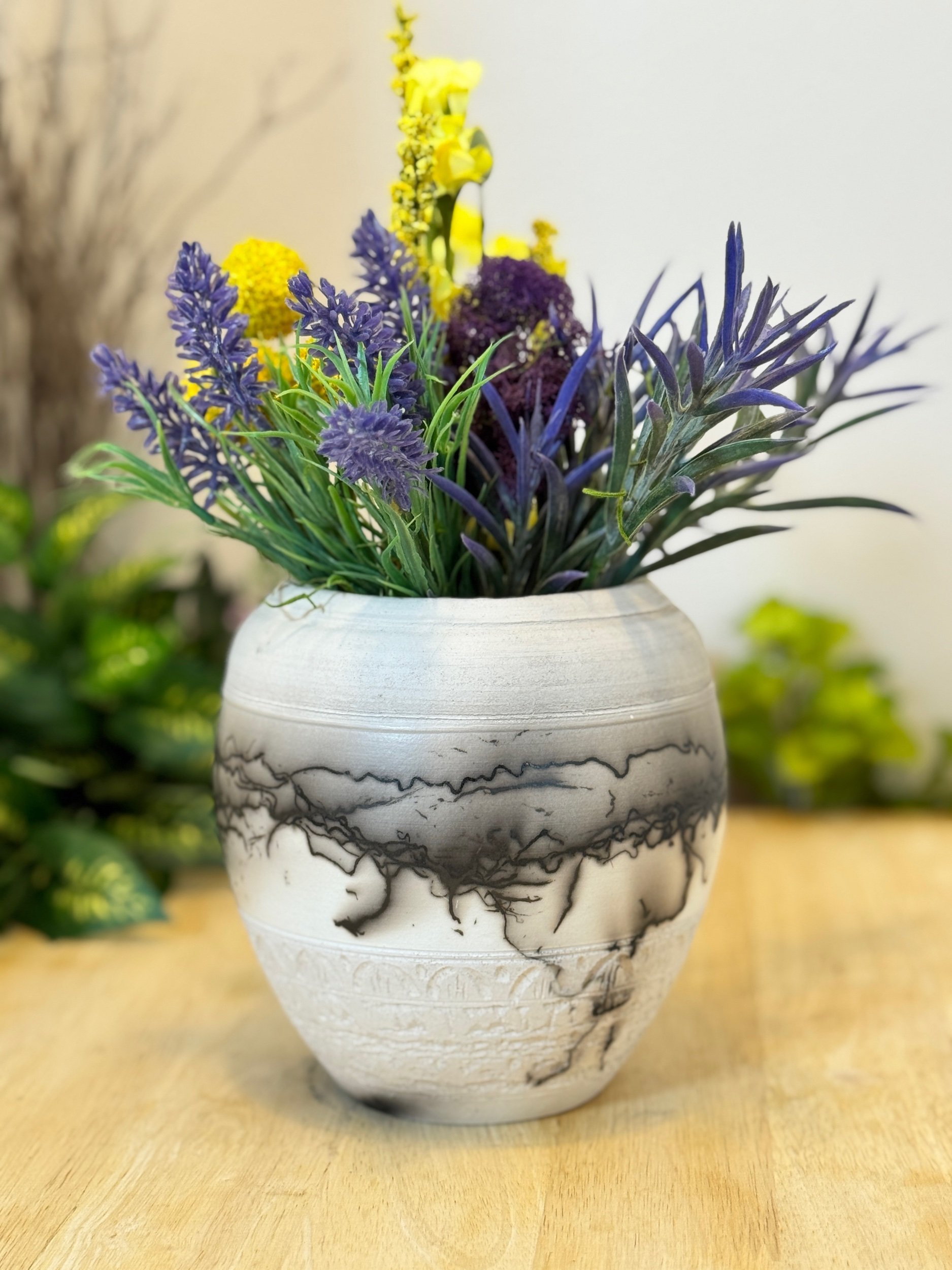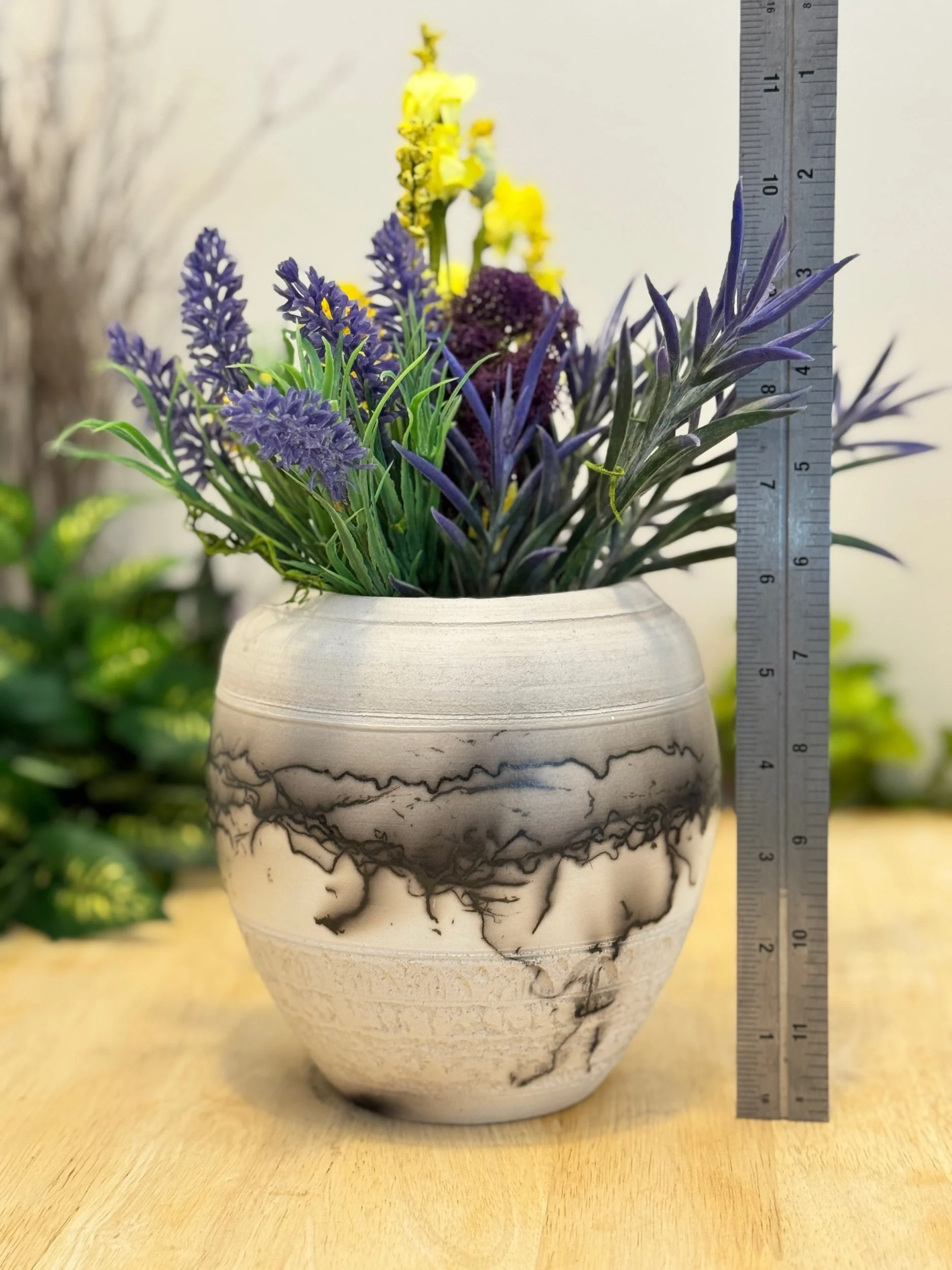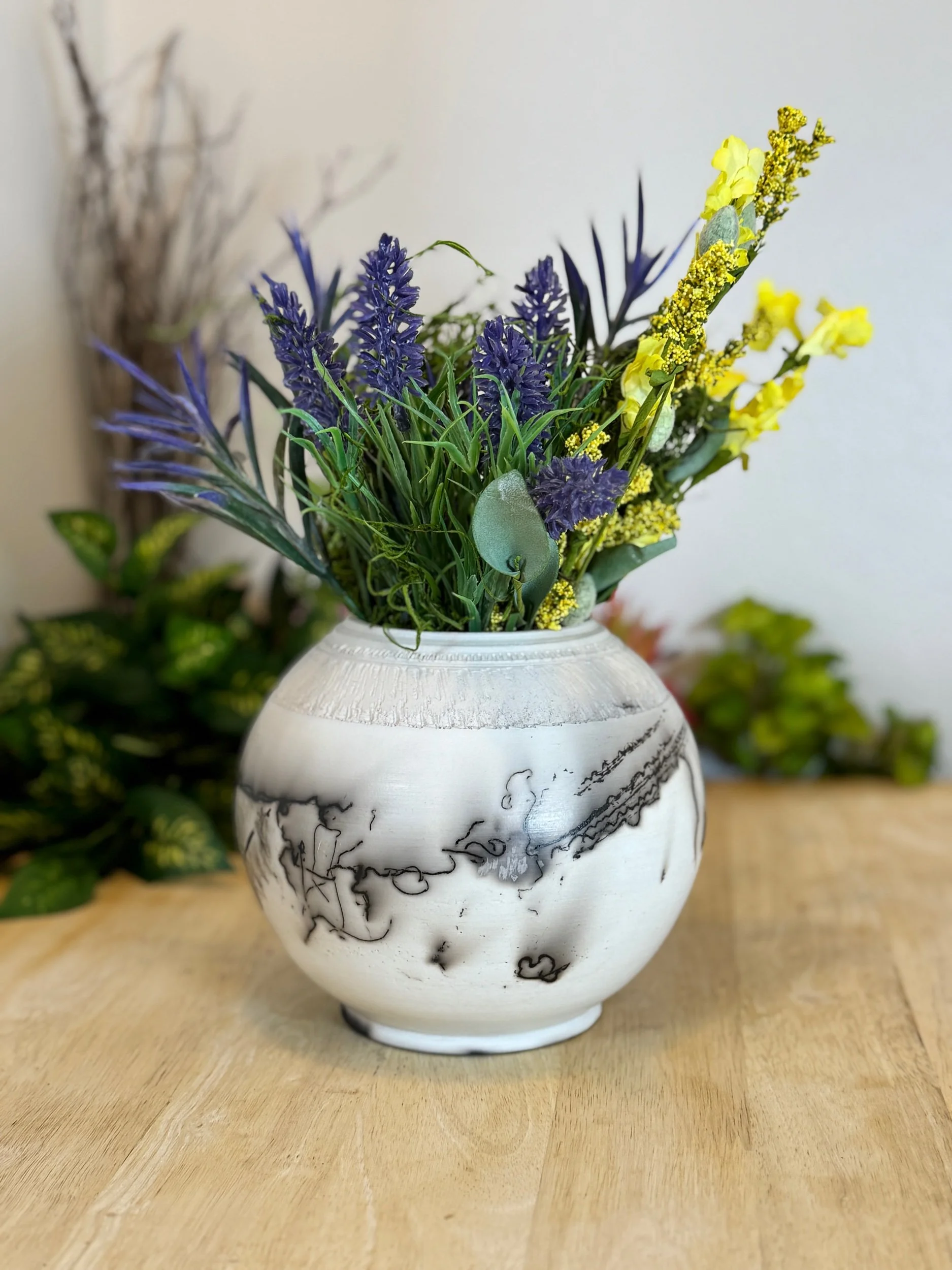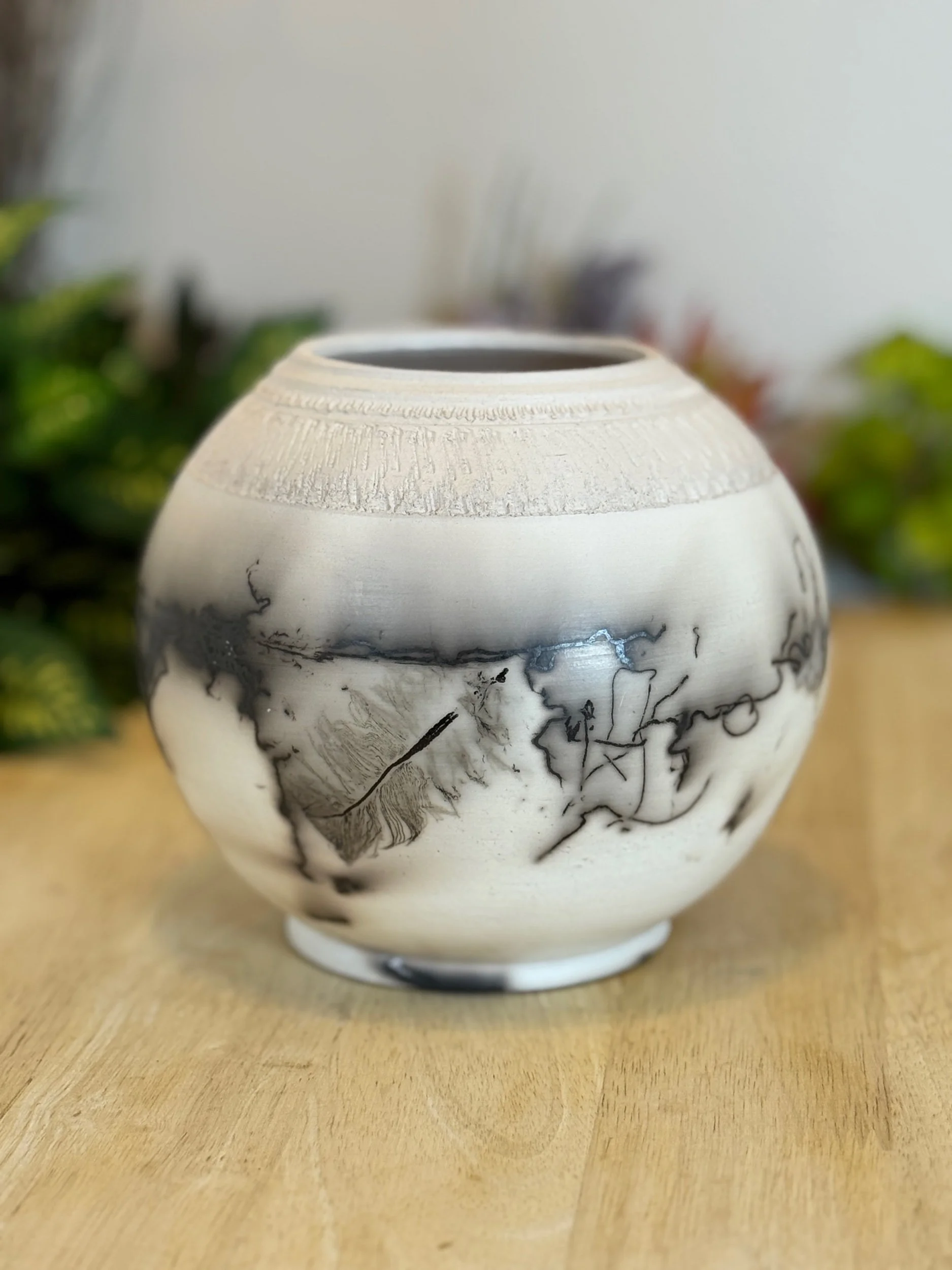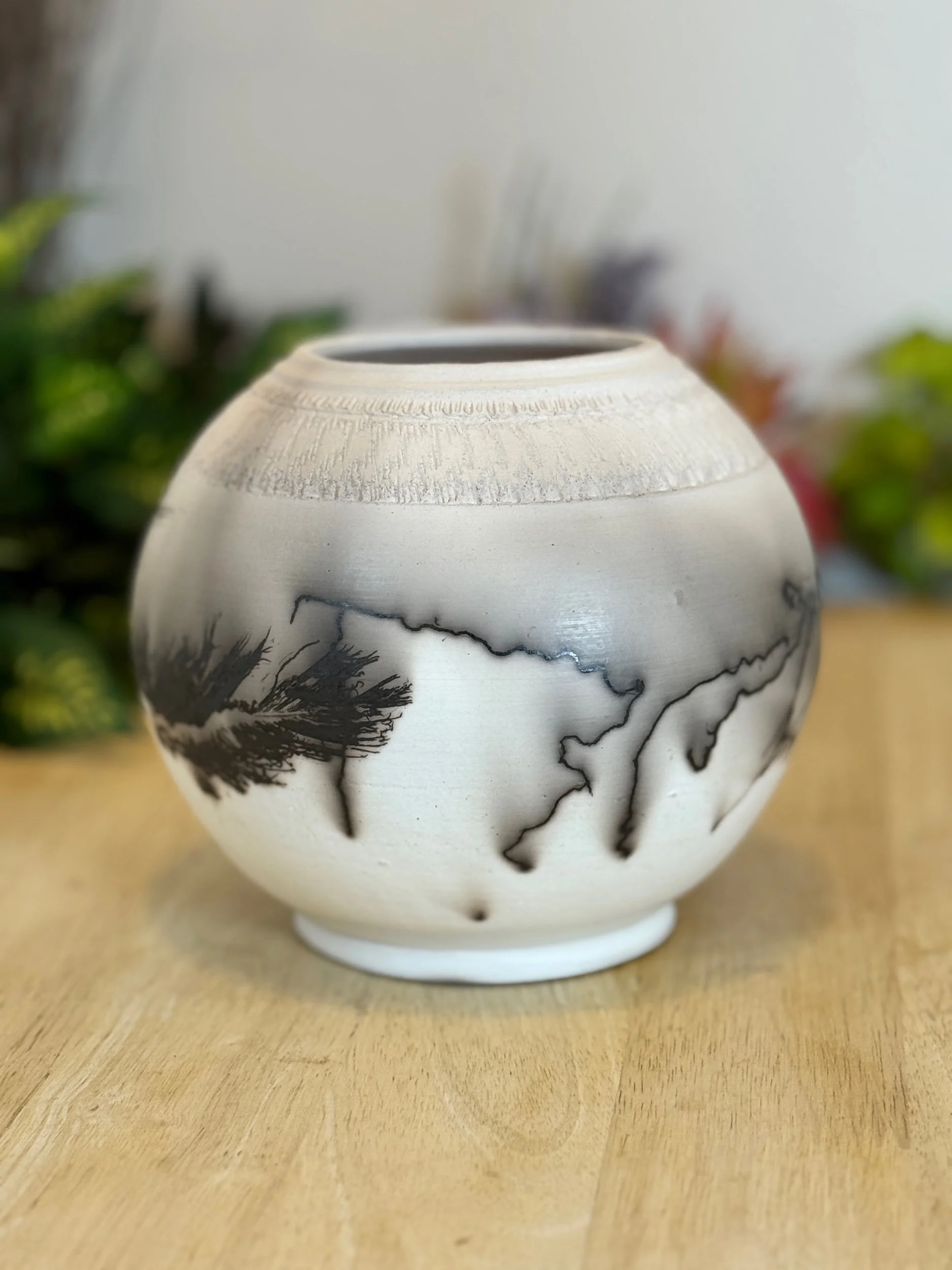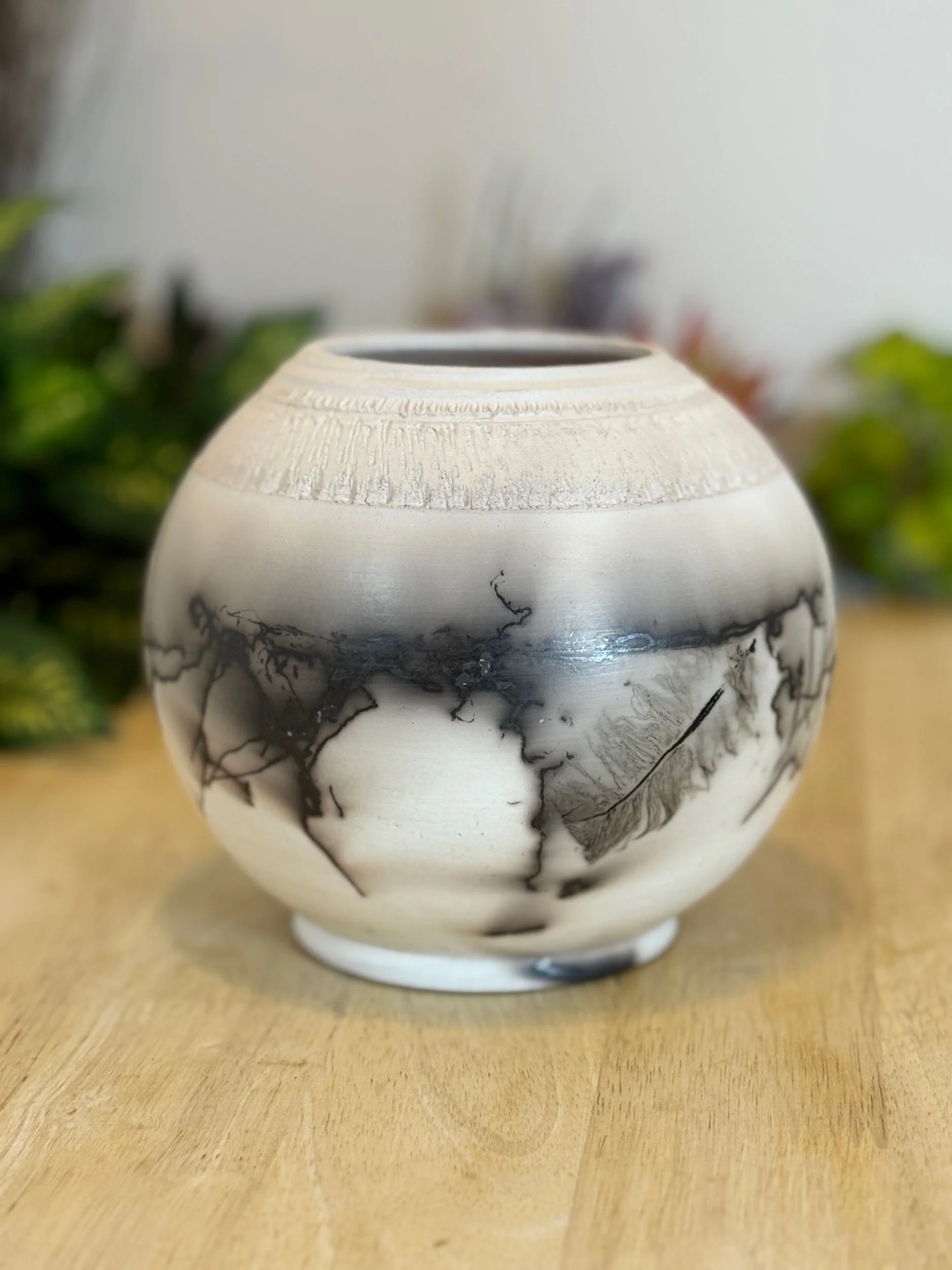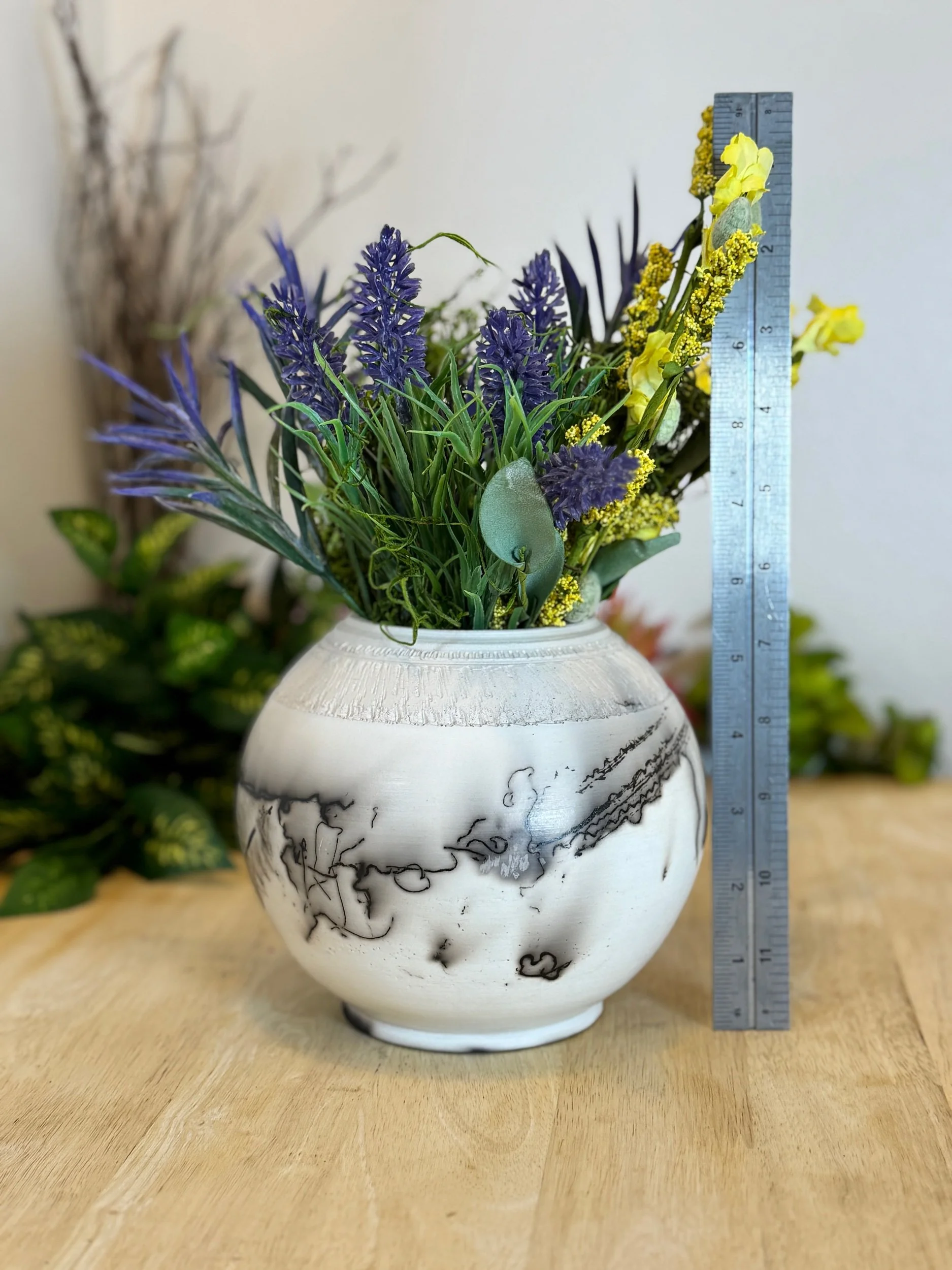The raku firing process is a unique, low-fire pottery technique originating from Japan, known for producing vibrant, unpredictable glazes and striking visual effects. Here’s a concise description of the process:
Preparation: Potters shape clay into desired forms, often using stoneware or earthenware suited for thermal shock. The pieces are bisque-fired (a preliminary firing at around 900–1000°C) to harden them for the raku process. Specialized raku glazes, rich in metallic oxides like copper, iron, or cobalt, are applied to achieve dramatic colors and effects.
Firing: The glazed pieces are placed in a small, portable raku kiln, typically gas-fired for precise heat control. The kiln is heated rapidly to around 800–1000°C (1472–1832°F), depending on the clay and glaze. This takes about 30–60 minutes. The potter monitors the kiln until the glaze melts, appearing glossy.
Reduction: Once the glaze is molten, the red-hot pieces are removed from the kiln using tongs (a step requiring skill due to the high temperatures). They are immediately placed into a container filled with combustible materials like sawdust, paper, or leaves. The container is sealed to create a low-oxygen (reduction) environment. The lack of oxygen reacts with the glaze, pulling oxygen from the metallic oxides and creating iridescent, metallic, or smoky effects. Unglazed areas may turn black due to carbon absorption.
Cooling and Cleaning: After 15–30 minutes in the reduction chamber, the pieces are removed and often quenched in water to halt the process and cool them rapidly. This enhances the crackle patterns in certain glazes. The pottery is then cleaned to remove soot and residue, revealing the final colors and textures.
Key Characteristics:
Unpredictability: The reduction process creates unique, non-reproducible patterns, with colors ranging from metallic sheens to deep blacks or vibrant reds.
Thermal Shock: Raku clay and glazes are formulated to withstand rapid temperature changes without cracking.
Speed: Unlike traditional firing, raku is fast, with the entire process often completed in a few hours.
This hands-on, dynamic process appeals to potters for its spontaneity and the tactile connection to the fire, though it requires careful handling due to the extreme heat and open flames involved


